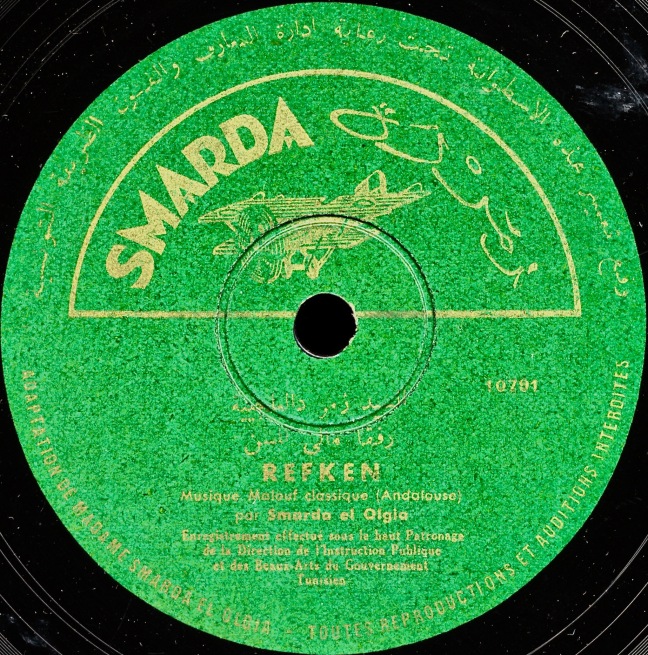Five years ago, I wrote about Smarda el Olgia here. Incredibly, nearly all of the information still holds. But a few new details have emerged as well. Below I quote from the original text (with some revisions) and then expand based on the additional sources that have come to light.
“Smarda el Olgia was born Rachel Sitbon in Tunis in 1892. She married Israel-Eugene Hayat [around 1909] and thus became known as Mrs. Rachel Hayat (Sitbon). In addition to being a fixture of Tunisian Jewish high society, presiding over a number of charitable organizations, she was also very well regarded among practitioners of the eastern Algerian and Tunisian classical Andalusian tradition known as Malouf [ma’luf].
Throughout the end of the 1920s and the 1930s, patrimony became the watchword across the Maghrib. In large part it was fear of Egyptian music’s popularity that caused French colonial figures and indigenous musical impresarios reformers to leap into action. Thus, institutions dedicated to safeguarding Andalusian music in all of its local forms, as well as committed to protecting Moroccan, Algerian, and Tunisian musical traditions more broadly constructed, were established. One thinks of the erection of the conservatory in Rabat, the formation of orchestras like El Djazairia in Algeria, and of course, the emergence of La Rachidia in Tunis in 1934. As part of this effort, Emile Gau, Director General of Public Instruction and Beaux-Arts Fine Arts in Tunisia, concerned that the suites associated with malouf [ma’luf] were in danger of being lost (a common trope and no doubt influenced by the work of Baron Rodolphe d’Erlanger and La Rachidia), commissioned Rachel Hayat to make a series of malouf recordings in Paris in order to preserve Tunisian heritage in perpetuity (take a close look at the label and you’ll see much of this background come alive). And in September 1935, Rachel Hayat (Sitbon), under the name Smarda el Olgia (Smarda or Zmarda was a common Tunisian Jewish name), performed that task beautifully––recording this and [a] dozen or so other records.”[1] To celebrate and promote the affair, a Smarda catalogue was printed and a press campaign was launched.
On “Refken” [رفقا مالك الحسن], a classic of the ma’luf repertoire, el Olgia (Hayat) is accompanied by the famed Mohamed Ghanem on the rebab (a bowed string instrument), who is invoked by name at the outset of the recording. On this and her other discs, she is also joined by the illustrious Khemais Ternan, virtuoso of the ud, and Chaloum Aaddaoui on violin. At various points on this record, the masterful bowing of strings cleaves so closely to el Olgia’s voice that one could be forgiven for thinking she was singing in harmony with herself.
Notes
Label: Smarda
Title: Refken [رفقا مالك الحسن]
Artist: Smarda el Olgia
Issue Number: 10791-10792
Matrix Number: N/A
Date of Pressing: 1935
[1] http://jewishmorocco.blogspot.com/2015/12/who-was-smarda-el-olgia-microhistorical.html

